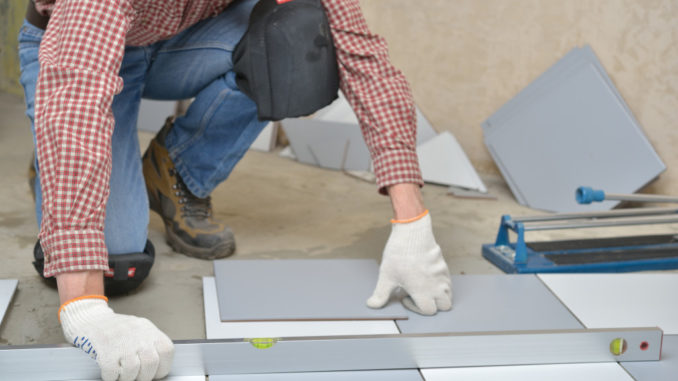
Tile flooring is a popular choice for many homeowners. This can be found in almost every home, mostly in the bathroom. Tiles can withstand moisture by expanding and contracting. They do this to adapt to the temperature changes in a room. In addition, they have a protective layer that makes them stain-proof and scratch-proof. Tiles also have decorative quality, which can complement any room in a home.
Even with all these perks, tile flooring is not without its downsides. If you insist on tiles instead of timber for flooring, there’s one thing you should know. A common issue many homeowners experience with their tiles is buckling or tenting.
What Does It Mean When Tile Floors Buckle Up?
Buckling or tenting happens when tiles displace themselves from their installed positions. Due to excess moisture, tiles will lift from their original position and push against each other. Not only have they partially detached from the underlayment, but they also end up cracked too. When this happens, it makes a loud gunshot-like sound. It’s not pleasant for the ears, nor the eyes. Seeing a once beautiful tiled floor end up with cracked and broken tiles can be disheartening. Learn the common causes of buckling in tiles so you can avoid them.
Excess Moisture
Moisture seems to be a common enemy of structural, fixtures, and other parts of a house. Unfortunately, tile isn’t exempted from this, at least to some extent. The nature of tile is that it expands and contracts as temperature changes. However, when it does expand, sometimes there’s not enough room for it to do so without coming into contact with other tiles. The more tiles expand significantly, the more will pop. The more tiles that will pop, the more will be cracked and broken.
Take note that excess moisture can cause the growth of black mold, especially in your bathroom so keep an eye out for that.
Uneven Floor, Underlayment, and the Bonding Layer
If the base itself is uneven, that is a big problem. Yes, tiles are inherently flexible but not that flexible. The floor itself is the foundation of the tiles, which serves a very significant role in keeping them intact and evenly leveled. Similarly, the application of the underlayment and bonding layer should be leveled correctly too. Although both should be given the same treatment in terms of leveling, these layers hinge on the base too. Do something about the floor first instead of leaving it be to become a problem you will have to deal with in the future.
Not Using Enough Adhesive
This step is important because not using enough adhesive or not applying it evenly will result in loose tiles. It may even result in starting from scratch. Unless you don’t mind shelling out money for retiling, might as well get it right the first time.
Faulty Installation Technique
This part is mostly in your contractor’s hands, but what you can do is to reach a reliable tiling contractor. Look up reviews and ask for opinions from friends and family that have availed of these services before. It also helps to do your research on the process of tile installation. Having an idea about the process will help put you at ease and empower you in your decisions.
Scrimping on Tiles
You may think that you’re saving dollars now, but old tiles are more likely to buckle than new ones. Over time, old tiles have been contracting and expanding due to temperature changes, wearing them out slowly. As time passes, they lose their flexibility. Don’t take a second look at your old tiles.

What To Do With Cracked Tiles?
If the damage isn’t too big, it can be fixed with these tips.
Check for Spares
Check your storage for extra tiles. If there are any, then that’s good news. With a chisel and a hammer, carefully remove the broken tiles and replace them with spare ones. Install the tiles correctly, as one normally does when they tile their whole floor. It’s important to note however that this will not be feasible if a large area of the floor is affected. Moreover, this could be a huge red flag for structural issues. The best and safest solution is to retile the whole thing.
Apply Epoxy
A high-quality epoxy can be a good fix for a small crack or two. Using a stick, apply the product along the crack. Make sure to work quickly and get some product in the crack. Once done, remove the excess epoxy from the surface.
Consider Retiling
The reality is, once tiles are broken they will remain broken. They can never be fully “fixed.” if you’re willing to shell out some money, consider retiling. But this time, do it right so you don’t encounter the same problem twice!
Tile flooring is beautiful, especially when it’s maintained well. By knowing what causes tiles to bulk or tent, you can easily avoid it and enjoy your tile flooring for as long as possible.
